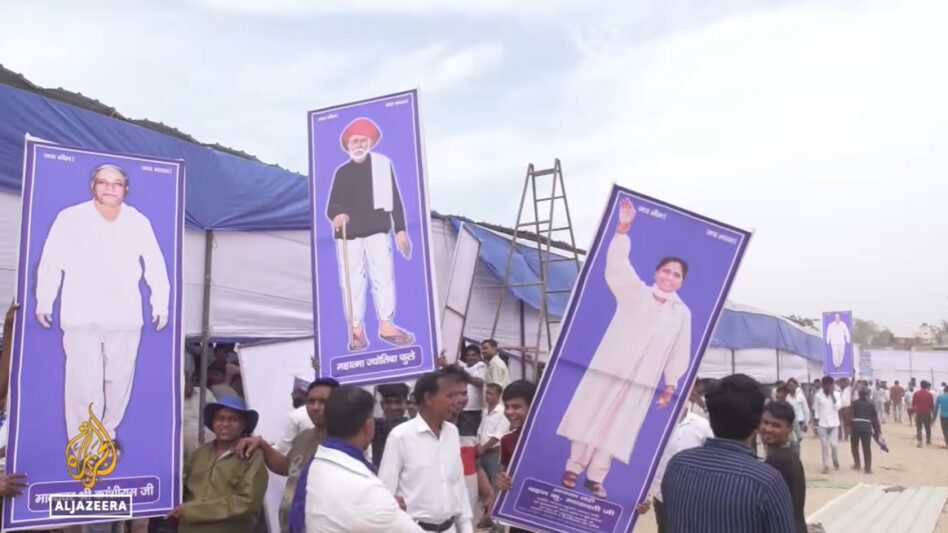MANY families went through untold sufferings and countless number of people lost their lives under the Japanese occupation during the Second World War that ended abruptly in 1945, and in the Malayan Emergency from 1948 that officially ended in 1960.
While Japanese soldiers brutally tortured and displayed severed heads in public to terrorise, insurgents were mostly engaged in skirmishes mainly in the rural and forested areas where they could retreat and seek refuge in thick jungles that covered most of the Malayan peninsula.
To cut off supplies from sympathetic rural folk and Orang Asli to guerrillas, the British colonial masters in 1950 decided to embark on a mammoth scheme to resettle huge number of people scattered in the countryside to newly created villages located near urban areas.
Eventually, about 500,000 people, which was 10% of the population, were confined to live in 450 new villages, with each family given a small plot of land big enough to build their own houses. With limited resources, most were nothing more than wooden huts with attap roof.
New villages surrounded by barbed wire and watchtowers to stop people from escaping were virtually internment camps, as guards were ordered to kill anyone who attempted to leave when curfew was in force every night from dusk to dawn.
Thankfully, I grew up in Pandamaran New Village where there was no barb wire except around the British military airbase adjacent to my village. After Malaya gained independence in 1957, the deserted airfield was sometimes used by small civilian aircrafts offering joy rides.
At least once a year, temporary funfairs would operate on the disused runway and the enclosed amusement park would also offer rides such as merry-go-round for young children, chair swing ride for thrill seekers and Ferris wheel for both young and old.

And every few years, a travelling circus would return, and everyone would know after the big top was erected as the tip was taller than all buildings in the vicinity. More people would view the animals in cages such as lions and tigers than watch the show, as most local folk were poor.
Pandamaran is sandwiched between Port Klang and Klang and the surrounding areas were teeming with catfish in the open sewers that flowed parallel to village roads. A variety of small fishes thrive in the drains of rubber and oil palm plantations, including fighting and angel fish.
In addition to catching and breeding ornamental fishes, male spiders were also caught to fight one another, and I have caught birds that preferred to run than fly at the airstrip with my bare hands, apart from playing with tops, marbles, rubber bands, bottlecaps and cigarette boxes.
There were also plenty of fruits to steal at the compound of village houses and nearby farms. Once, together with another friend, we pulled off a sugar cane each grown at a house near the drain and made our way to a public standpipe and chewed up the whole cane twice our height.
During king tides, many large drains in my village would be overflowed by incoming seawater, and the receding tide would leave many fishes high and dry. But live fish delivered to doorsteps became a thing of the past following successful flood control measures by the authorities.
There were plenty of colourful fiddler crabs and cute looking mudskippers along the drains in the swamp between Pandamaran and Port Klang before it was reclaimed and turned into an industrial area. And mud crabs offered many catchers a livelihood and gourmet food for diners.
After rain, large number of male frogs would croak in crescendo at night to attract females and inadvertently boys like me. At the La Salle Klang school field, my classmates and I caught more than 30 frogs and fried them using pans we had brought along for camping the next day.
After finishing secondary school, I stayed with an uncle that operated a motor workshop at Senai in 1968. He specialised in repairing trailers and most were used for transporting giant logs placed precariously on wooden beams of the trailer and tied together using metal chains.
Although income was good, these drivers risked their lives every time they fasten the logs with chains or while removing them. Whether driving off from jungle tracks or along trunk roads, these drivers are ready to jump off the trailer if they braked very hard to prevent a collision.
Otherwise, they would be flattened by logs charging towards them like torpedoes. These trailer cabs were without doors, much less seatbelts. Apart from the revenue gained by the government, the main beneficiaries were corrupt politicians and officials collaborating with timber tycoons.

Sadly, the greatest irreversible loss suffered by our country was the overlogging of our tropical rain forest. Our jungles were home to some 15,500 species of higher plants, 746 birds, 300 mammals, 379 reptiles, 198 amphibians, and 368 species of fish, but many have vanished.
Many Orang Asli that have successfully lived off the jungle for hundreds of years suddenly found their paradise gone or are displaced after being barred from their ancestral homelands by logging companies given concessions by state governments and is still happening until today.
In addition to the destruction and desecration of nature, our society had regressed more than progressed. I grew up in the 1950s and early 1960s unconscious of racial or religious prejudice as I studied in multiracial English schools and mixed more with those I liked and nothing else.
After completing Form Five and at Senai, a new Malay friend asked me why I spoke English like an Indian. Only then I realised that I have been mixing mostly with Indian schoolmates living in Pandamaran and the muttons served during festive seasons in their homes were divine.
As a boy and in my youth, I used to marvel at the courtesy and kindness shown by elderly kampung pakciks. They may have little or no schooling but are certainly more educated than most university graduates that were churned out in huge numbers in later years.
A person may be learned but is not educated without showing courtesy and this includes loudmouth politicians. They are utterly selfish and have also brought more harm to the very communities they are pretending to champion and success was made easy by undereducation.
It is odd when supporters could believe politicians are fighting for their race and religion in the same breath, as race is never a factor in any religion. Missionaries in the past were successful in spreading religions all over the world without condemning other race, language or tradition.
As the Malayan peninsula is located at the crossroads between India and China, the Malay culture had evolved into one of the richest found anywhere and was epitomised by P Ramlee movies made in Singapore from 1948 before he moved back to Malaysia in 1964.
Until 1962, I stayed in the teachers’ quarters of Pandamaran Chinese School and could still remember a tall Malay lady teacher with a very straight back and looked exceptionally elegant in her sarung kebaya. She was much admired by all the other teachers, students and villagers.
But over the past decades, such beautiful Malay cultures were replaced by Arab traditions and together with other changes, the halcyon days I experienced when growing up have been lost forever. To people of my generation, it was a paradise which we could now only reminisce. – Aug 29, 2021
YS Chan is Asean Tourism Master Trainer for travel agencies, master trainer for Travel & Tours Enhancement Course and Mesra Malaysia. He is also a tourism and transport industry consultant and writer.
The views expressed are solely of the author and do not necessarily reflect those of Focus Malaysia.










